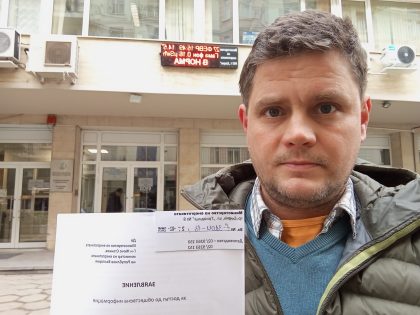The unprecedented earthquake and tsunami in Japan March 10 have left thousands dead, destroyed villages and damaged many of the nation’s nuclear reactors. James F. Stubbins, professor and head of the department of nuclear, plasma, and radiological engineering at the University of Illinois, discusses what is a very fluid situation. He was interviewed by Jeff Unger, of the U. of I. News Bureau.

What is a reactor meltdown?
A meltdown occurs when the nuclear fuel inside the reactor pressure vessel becomes so hot that it melts. This situation would occur if the nuclear fuel does not have sufficient cooling water circulating around it to remove the excess heat. In the situation in Japan, it appears that the water levels inside some of the reactors have dropped below the top of the fuel elements. This could cause the upper ends of the fuel rods to melt. It also has the consequence that the steam surrounding the top end of the fuel would react with the zirconium fuel cladding. The oxygen in the water would react to release hydrogen gas. When the operators release the pressure inside the reactor pressure vessel, some hydrogen gas is also released into an outer containment building. This seems to be the source of the hydrogen that has caused the explosions in the secondary containment in two of the Fukushima Dai-ichi reactors.
Given the frequency with which Japan is rocked by earthquakes, how could so many plants have been damaged? It is still not clear how many of the 55 nuclear reactors in Japan have been damaged. Evidently 11 of their reactors have been shut down. Most of the attention is directed toward the reactors at the Fukushima Dai-ichi site where there are six boiling water reactors (BWR). Reports have concentrated on the oldest three units, Units 1, 2 and 3 which all started operation in the 1970s. In these systems, the reactor shut down procedures seemed to have been performed as planned. The concern is over providing sufficient cooling to remove the excess heat following shut down. In general, reactor systems are designed to withstand earthquakes. However with an earthquake of the magnitude experienced in Japan, I am certain that there will be in depth examinations of all of the affected reactors to ensure their continued safe operation.
Does the U.S. have any plants in harm’s way, so to speak?
The reactors in the news are the BWRs. In the U.S. fleet of 104 operating reactors, about one-third of the reactors are the BWR design. It appears from the news from Japan that the reactor shut-down process performed as it should. The problems have arisen since, following shutdown, when the electricity source to supply the emergency cooling systems has not worked. This resulted in the use of other pumping systems to pump seawater into some of the systems. It is very unlikely that a similar scenario could occur in the U.S. with any of the operating U.S. plants. I would expect that there will be lessons from the situation in Japan that will lead to further enhancing the multiple safety systems which protect the reactors and the public during emergency situations.
Are you concerned what’s happening in Japan will set back the future for nuclear power?
I am certain that the response to the emergency situation at the reactors in Japan will be studied in detail to learn how to prevent or mitigate possible future emergency response scenarios. The international nuclear power industry has worked in a highly coordinated way to share best operating practices. Since many of the world’s reactors are closely related in design, either BWRs or pressurized water reactors, it is possible to share best practices. The systems of sharing information date back more than 30 years and have led to enhanced safety and to enhanced operational efficiency over the years.
For the future, several of the newest reactor designs have an internal cooling system that does not rely on external pumping and cooling. The concept in these advanced designs is to reduce the dependence on external cooling sources that have been the main problem with the reactors in Japan.
http://illinois.edu/
What is a reactor meltdown?
A meltdown occurs when the nuclear fuel inside the reactor pressure vessel becomes so hot that it melts. This situation would occur if the nuclear fuel does not have sufficient cooling water circulating around it to remove the excess heat. In the situation in Japan, it appears that the water levels inside some of the reactors have dropped below the top of the fuel elements. This could cause the upper ends of the fuel rods to melt. It also has the consequence that the steam surrounding the top end of the fuel would react with the zirconium fuel cladding. The oxygen in the water would react to release hydrogen gas. When the operators release the pressure inside the reactor pressure vessel, some hydrogen gas is also released into an outer containment building. This seems to be the source of the hydrogen that has caused the explosions in the secondary containment in two of the Fukushima Dai-ichi reactors.
Given the frequency with which Japan is rocked by earthquakes, how could so many plants have been damaged? It is still not clear how many of the 55 nuclear reactors in Japan have been damaged. Evidently 11 of their reactors have been shut down. Most of the attention is directed toward the reactors at the Fukushima Dai-ichi site where there are six boiling water reactors (BWR). Reports have concentrated on the oldest three units, Units 1, 2 and 3 which all started operation in the 1970s. In these systems, the reactor shut down procedures seemed to have been performed as planned. The concern is over providing sufficient cooling to remove the excess heat following shut down. In general, reactor systems are designed to withstand earthquakes. However with an earthquake of the magnitude experienced in Japan, I am certain that there will be in depth examinations of all of the affected reactors to ensure their continued safe operation.
Does the U.S. have any plants in harm’s way, so to speak?
The reactors in the news are the BWRs. In the U.S. fleet of 104 operating reactors, about one-third of the reactors are the BWR design. It appears from the news from Japan that the reactor shut-down process performed as it should. The problems have arisen since, following shutdown, when the electricity source to supply the emergency cooling systems has not worked. This resulted in the use of other pumping systems to pump seawater into some of the systems. It is very unlikely that a similar scenario could occur in the U.S. with any of the operating U.S. plants. I would expect that there will be lessons from the situation in Japan that will lead to further enhancing the multiple safety systems which protect the reactors and the public during emergency situations.
Are you concerned what’s happening in Japan will set back the future for nuclear power?
I am certain that the response to the emergency situation at the reactors in Japan will be studied in detail to learn how to prevent or mitigate possible future emergency response scenarios. The international nuclear power industry has worked in a highly coordinated way to share best operating practices. Since many of the world’s reactors are closely related in design, either BWRs or pressurized water reactors, it is possible to share best practices. The systems of sharing information date back more than 30 years and have led to enhanced safety and to enhanced operational efficiency over the years.
For the future, several of the newest reactor designs have an internal cooling system that does not rely on external pumping and cooling. The concept in these advanced designs is to reduce the dependence on external cooling sources that have been the main problem with the reactors in Japan.
http://illinois.edu/






